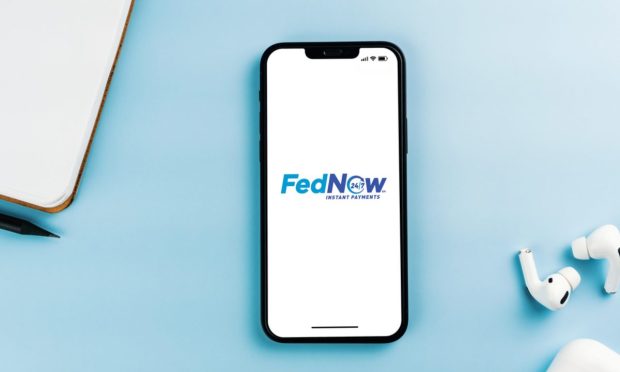Fed Says FedNow, Instant Invoices Put Control in Payers’ Hands

2023 will be a transformative year for financial services, marked by a new addition to the world of instant payments, Bernadette Ksepka, vice president and deputy head of product management for the FedNow SM Service Program, told PYMNTS in a recent interview.
“Financial institutions and their service providers are going to be able to use the FedNow Service as a springboard to provide innovative payment services to their customers,” Ksepka said. “[FedNow is] going to be a game-changer for financial institutions. These FIs are going to be able to expand their presence in the payments market.”
Specifically, Federal Reserve Banks are developing the FedNow Service to facilitate instant payment services by financial institutions (FIs) of any size or location in the U.S., 24/7. Institutions participating in the service will be able to send and receive instant payments at any time, and recipients will have access to funds immediately.
See also: EU Plans Instant Payment Regulation in 2022, US Eyes FedNow for 2023
Among the most keenly anticipated features once the FedNow Service goes live is Request for Payment (RFP), Ksepka said. Request for Payment will allow businesses, consumers and government agencies to send messages requesting funds from another party via the FedNow Service.
The FedNow Service and its Request for Payment feature will benefit the end user and give FIs an opportunity to create greater value for their customers, while also providing FinTechs with a new platform for payment innovation.
The Digital Equivalent of an Invoice
When the FedNow Service launches next year, Request for Payment will be one of the key features, according to Ksepka. It will allow FIs and other service providers to build instant bill pay services, so that business customers can conveniently send eInvoices and receive instant bill payments that can improve their cash flow management.
The recipient’s FI will present the Request for Payment to the customer via their mobile app or website with a push notification.
“Request for Payment gives companies who have historically relied on paper or eInvoicing — which takes time and requires a lot of overhead — an opportunity to request payments immediately,” Ksepka said. “It’s the digital equivalent of getting a paper invoice in the mail via your financial institution’s secure channels.”
Consumers pay more than 15 billion bills annually, and most of that volume currently goes through billers’ websites, not through the banks or credit unions. With the FedNow Service and its Request for Payment feature, banks will be able to bring more of that activity in-house, so to speak, Ksepka said.
Related: FedNow Pilot Brings New Features, Use Cases for Instant Payments in ’23 and Beyond
For businesses themselves, the reduction of paper invoices will offer a major cost-saving advantage. The data that flows with the RFP message — which includes all the details that traditionally accompany an invoice — can be used to automate accounting and reconciliation processes.
Request for Payment also give payers more flexibility and control than existing payment methods, such as automated recurring payments or ad-hoc check payments.
“The payer can choose the exact timing of the payment and how much they want to pay at that time in full or partial transactions,” Ksepka said. “Once the recipient approves that RFP, the payment is made immediately” if they chose to pay it now, or at a later scheduled time.
In terms of mechanics, the transaction is conducted via a credit push transaction through the FedNow Service, and the status of the payment is transparent to all parties — both the payer and payee will know whether the payment was successful within seconds.
Transformational Functionality
One of the most compelling use cases for RFP is bill pay, but there are others which should be of interest to both FIs and FinTechs.
Corporate accounts payable (AP) and point-of-sale transactions, where merchants could use a QR code to initiate a payment, are two other major opportunities, Ksepka said.
Outside of business use cases, there are other household expenses and payments that could be better managed through RFP, including utility bills, subscriptions and membership dues.
The healthcare industry is ripe for RFPs, with electronic payments delivering $3 per transaction in cost savings over manual transaction costs, Ksepka said. These might range from insurance payments to providers to patient co-payments.
Ksepka said certain cash-heavy payments, such as rent collections, are also good candidates for RFP. Landlords would like to avoid the risk of insufficient funds and avoid carrying around large amounts of cash, and RFPs can reduce such risks.
Looking ahead, Ksepka noted that FIs will need to make the necessary technological infrastructure investments to enable instant payments and properly present payment instructions to customers, complete with timestamps and other details. She cited the industry’s desire to create a consistent end-to-end customer experience, balanced with opportunities for innovation.
“All of this has to be based on a strong customer experience,” she said. For FIs, embracing instant payments eliminates the roughly two days it takes for payments to settle, and provides the speed that all end users demand.
The Federal Reserve Banks are working closely with FIs and the broader ecosystem to provide relevant best practices that will be made available to guide businesses and service providers as they build out their solutions.
